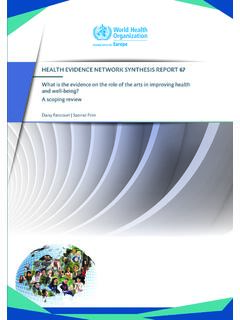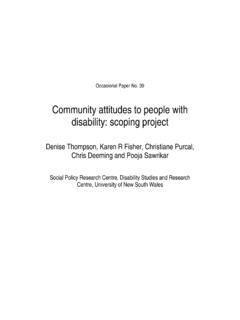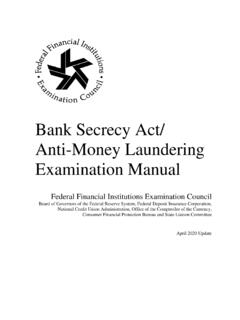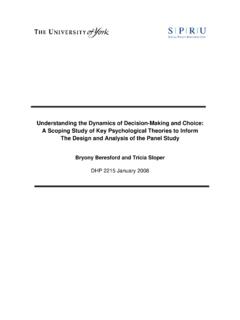Transcription of Offshore Wind Energy Strategies Report
1 Offshore Wind Energy Strategies Regional and national Strategies to accelerate and maximize the effectiveness, reliability, and sustainability of Offshore wind Energy deployment and operation January 2022 Department of Energy Washington, DC, 20585 Disclaimer This work was prepared as an account of work sponsored by an agency of the United States Government. Neither the United States Government nor any agency thereof, nor any of their employees, nor any of their contractors, subcontractors or their employees, makes any warranty, express or implied, or assumes any legal liability or responsibility for the accuracy, completeness, or any third party s use or the results of such use of any information, apparatus, product, or process disclosed, or represents that its use would not infringe privately owned rights.
2 Reference herein to any specific commercial product, process, or service by trade name, trademark, manufacturer, or otherwise, does not necessarily constitute or imply its endorsement, recommendation, or favoring by the United States Government or any agency thereof or its contractors or subcontractors. The views and opinions of authors expressed herein do not necessarily state or reflect those of the United States Government or any agency thereof, its contractors or subcontractors. Acknowledgments This Report was prepared by the Department of Energy (DOE) Office of Energy Efficiency and Renewable Energy (EERE) Wind Energy Technologies Office (WETO).
3 The lead authors of the Report were Nate McKenzie and Monica Maher from WETO. Additional authors and primary contributors to the Report were Jocelyn Brown-Saracino and Paul Spitsen (DOE); Shannon Davis, Mike Derby, Jian Fu, Patrick Gilman, and Liz Hartman (WETO); Dan Beals, Cynthia Bothwell, Tyler Christoffel, Gary Norton, and Coryne Tasca (in support of WETO); and Chloe Constant, Alexsandra Lemke, Melinda Marquis, Walt Musial, Matt Shields, and Rich Tusing (National Renewable Energy Laboratory). Additional valuable contributions were provided by Jim Ahlgrimm, Amber Frumkin, Phillip Dougherty, Ivette Gonzalez, Naomi Lewandowski, and Maggie Yancey (WETO); Sheri Anstedt, Philipp Beiter, Jennifer Breen Martinez, David Corbus, John Frenzl, Bethany Frew, Johney Green, Daniel Laird, Eric Lantz, Brian Smith, and Paul Veers (National Renewable Energy Laboratory); and William Shaw (Pacific Northwest National Laboratory).
4 The authors also appreciate the input of more than 150 professionals from academic and research institutions, national laboratories, private companies, and state governments that informed the challenges, opportunities, and potential actions included in the Report . The authors are grateful to the following reviewers who provided invaluable feedback and guidance: Robert Marlay (Director of WETO), Alejandro Moreno (Deputy Assistant Secretary for Renewable Power [DAS-RP]) and Kelly Lefler (former Chief of Staff, DAS-RP). Staff from the Bureau of Ocean Energy Management and the Bureau of Safety and Environmental Enforcement within the Department of the Interior, the Maritime Administration of the Department of Transportation, the National Oceanic and Atmospheric Administration of the Department of Commerce, and the Federal Energy Regulatory Commission contributed valuable review, insights, and comments.
5 Within DOE, WETO received valuable input from the Loan Programs Office, the Advanced Research Projects Agency Energy , and the Office of of Energy |January 2022 Offshore Wind Energy Strategies | Page i Executive Summary This Report outlines Strategies to accelerate and maximize the effectiveness, reliability, and sustainability of Offshore wind Energy deployment and operation in the United States. This Report does not include commitments from any agency or entity and is meant to provide information on barriers impeding Offshore wind Energy deployment and effective Strategies to facilitate successful industry growth.
6 Offshore wind has the potential to supply substantial amounts of clean Energy to meet America s power needs while creating jobs and addressing the climate crisis. Further, Offshore wind power plants can provide reliable and increasingly affordable renewable power near coastal Energy load centers where there is a scarcity of sites for large-scale renewable Energy development on land. For these reasons, many states have aggressively adopted proactive Offshore wind Energy policies to capture the benefits of economic growth, Energy independence, and reduced greenhouse gas emissions.
7 Based on current state policy commitments of about 39 gigawatts (GW) by 2040,1 some coastal states are planning for 50 percent or more of their electricity to come from Offshore wind in the coming decades. In March 2021, the Department of Energy , Department of the Interior, and Department of Commerce announced a national goal to deploy 30 GW of Offshore wind capacity by Deploying 30 GW or 30,000 megawatts (MW) would mark a significant increase from the 42 MW of Offshore wind Energy currently operating in the United States. Reaching the 30-GW-by-2030 goal would generate enough electricity to power over 10 million American homes3 and establish the United States as a major participant in the global Offshore wind Energy industry.
8 It would also create tens of thousands of jobs in a range of occupations that would pay at or above the national average and sustain more than $12 billion a year in Offshore wind project capital Such project investments would spur additional investments in supply chain development, port revitalization, vessel construction, wind power plant operations, and onshore assembly facilities. Attaining the 30-GW-by-2030 deployment goal could set the country on a path towards deploying at least 110 GW of Offshore wind capacity by This level of deployment would 1 Musial, Walt, Beiter, Philipp, Spitsen, Paul, Duffy, Patrick, Marquis, Melinda, Cooperman, Aubryn, Hammond, Robert, Shields, Matt.
9 2021. Offshore Wind Market Report : 2021 Edition. Washington, : Department of Energy Office of Energy Efficiency & Renewable Energy . 2 The White House. 2021. FACT SHEET: Biden Administration Jumpstarts Offshore Wind Energy Projects to Create Jobs. Last modified: March 29, 2021. 3 Ibid 4 Ibid 5 Ibid Department of Energy | January 2022 Offshore Wind Energy Strategies | Page ii supply nearly 6 percent of the Nation s electricity from Offshore wind Offshore wind Energy use could be even greater because of its potential to be sited where land is limited and its potential role in economywide decarbonization, such as through production of hydrogen for zero-carbon transportation fuels and industrial processes.
10 Offshore wind deployment has a unique set of challenges compared to land-based Energy plants. For example, Offshore structures and undersea electrical cables must withstand the harsh marine environment and construction and maintenance at sea requires specialized equipment and skills. Offshore wind Energy is currently more expensive than more mature electricity generation technologies for a number of reasons relatively nascent technology, the challenges of the marine environment, the cost of bringing power to shore via long submarine cables, less-established supply chains, and a more general lack of efficiencies gained with experience.

















